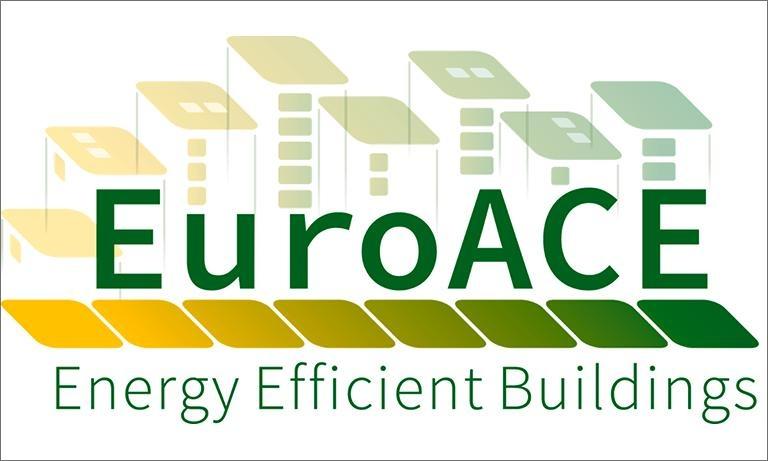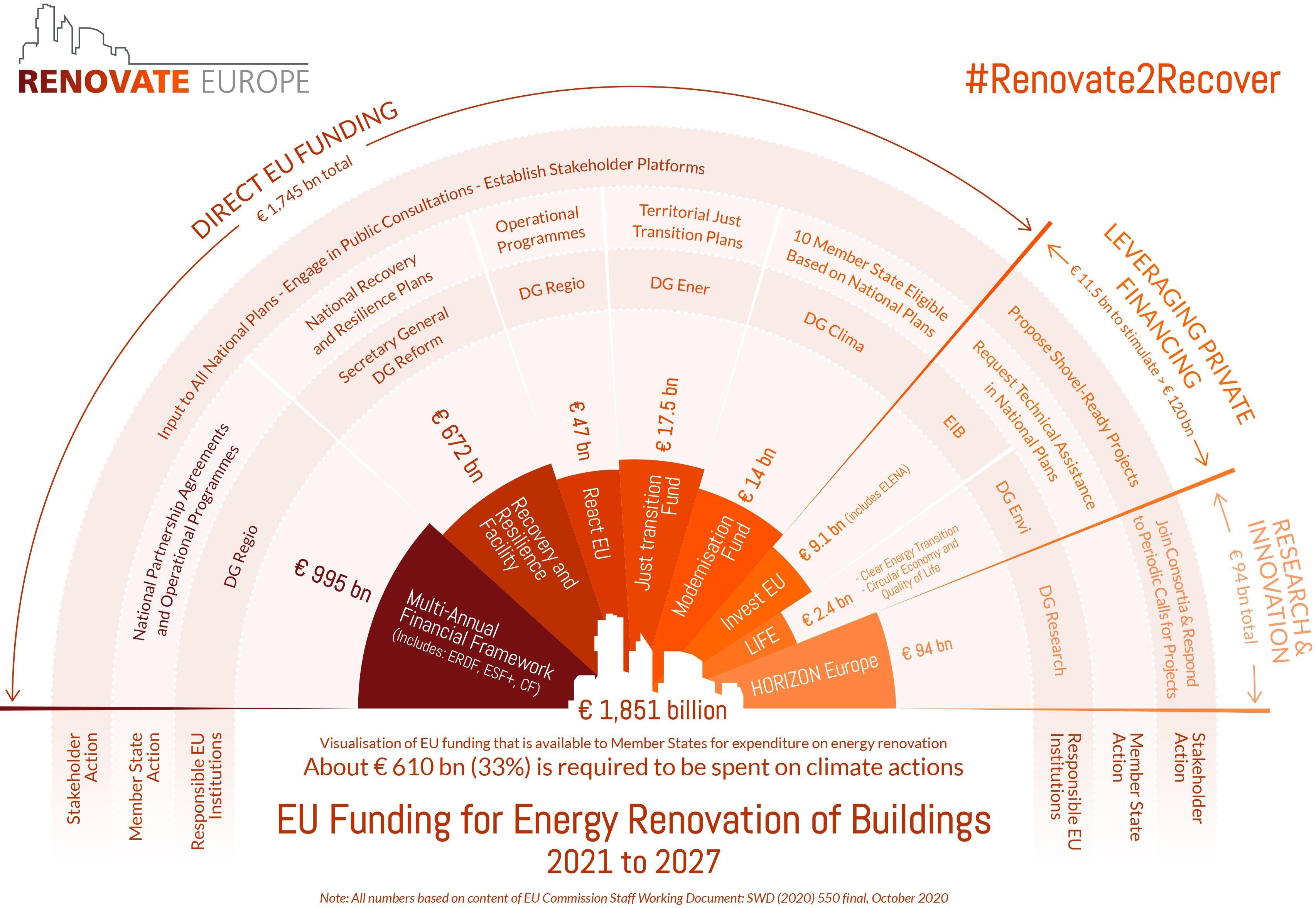
Renovation Wave: The End of the Beginning
di Adrian Joyce
DOI 10.12910/EAI2020-068
In the business sector, we welcome the renovation wave as a step change in the way that the EU regulates our sector. However, it is only the end of the beginning. The measures forecasted in the review of EPB Directive will have to be carefully designed to ensure that they assist Member States in rapidly achieving an increased rate and depth of energy renovation of their building stock. This will inevitably require policy innovations in most Member States.

Adrian Joyce
Secretary General EuroACE
In October 2020, The European Commission published a far-reaching strategy known as the Renovation Wave. Its headline objective is to increase the energy renovation rate in the European Union to at least twice the rate it is today. In working to achieve this objective The European Union expects to address many serious societal questions including how to address the negative impacts of climate change, how to reach the long-term goals of creating a climate-neutral economy and how to alleviate energy poverty in the process. In the business sector that I represent we welcome this Strategy as a step change in the way that the European Union regulates our sector. However, it is only the end of the beginning! Let me explain. Of high interest within the Strategy is the proposal to review the Energy Performance of Buildings Directive (EPBD) during 2021. This, on its own, is a courageous proposal as the last revision of the EPBD was completed just two years ago.
Several Member States are not yet in full conformity with the revised requirements of the EPBD, so re-opening it now is a brave move.
Among the elements that the Commission intends to propose as changes to the EPBD, we find the following key topics:
- An examination of minimum energy performance standards (MEPS) as a potentially powerful tool to stimulate energy renovation within the European Union
- A review of the methodology for the preparation of energy performance certificates as valuable information tools that can motivate building owners to undertake renovations
- A stronger financing and funding requirement that will be more strongly tied to achieving measurable results.
Policy innovations in most Member States
All of these measures will have to be carefully designed to ensure that they assist Member States in rapidly achieving an increased rate and depth of energy renovation of their building stock.
This will inevitably require policy innovations in most Member States, especially in relation to the design and phased introduction of MEPS. In addition, the Strategy proposes several individual initiatives targeted at specific segments of the building stock. Two segments stand out:
- Poor performance housing, which will be addressed by a new initiative to be known as the Affordable Housing Initiative and which promises to see measures being proposed that will increase the quality of life of millions of citizens and their families
- Public buildings, with a proposal that the requirements of the Energy Efficiency Directive (EED) on renovation of public buildings be extended beyond the current very limited scope to include all public buildings whether owned or occupied by central government or local government. In fact, the Commission has suggested that all buildings frequently visited by the public should be brought into a stringent requirement for an increased rate and depth of energy renovation.
Creating new jobs
My Association, EuroACE, looks forward to the challenge of engaging with the European Commission in developing the proposals that it has outlined so that we will rapidly stimulate an increase in demand for deep energy renovation of our building stock. We do not underestimate the challenge of such a broad review of EU legislation, but we have the energy and the knowledge to play our part.
In addition, we are mobilising the national partners of the Renovate Europe Campaign to be actively engaged with their national governments to ensure that EU legislation on buildings is fully and ambitiously implemented to an accelerated timeframe. In this regard, our Italian partner, Renovate Italy, is already highly active and influential in the national context.
In the work that we are doing to prepare for the upcoming reviews of legislation, we will always raise the motivating issue of the multiple benefits that will flow from succeeding in addressing the challenge of deep energy renovation. The Renovate Europe Campaign, managed by EuroACE, commissioned fresh research in the Summer of 2020 into the multiple benefits that can arise from ambitious energy renovation programmes. From this research, we can read that for every € 1 million invested in energy renovation, an average of 18 new jobs are created within the building sector. Those jobs will be created all along the construction value chain and will induce up to a further three indirect jobs within the economy thus making investment in energy renovation a dynamic jobs-creating machine.
In addition, further research has shown that improving the performance of buildings, paying particular attention to indoor environmental quality, can greatly improve the sense of well-being in our population, reduce sick days and increase productivity.
When monetised these multiple benefits significantly boost economic activity and lead to savings across many policy fields.
For example, it has been found that a well-renovated hospital means that recovery times are accelerated with patients spending an average of 11% less time in hospital. When monetised this delivers a potential benefit of € 500 billion to the European economy – a non-negligible sum!
Important factors for an early and rapid success
There are other factors that are important to align to ensure that the Renovation Wave Strategy is an early and rapid success. Among those are the linked issues of digitalisation of the construction sector and industrialisation of the renovation process.
The construction sector has been slower than other sectors to adopt digitalisation.
However, it is now widely appreciated that digitalisation can help to accelerate the achievement of high performing buildings and this through better monitoring of real-time energy consumption and performance of equipment within buildings. By delivering reliable real-time information, owners feel empowered to take decisions that in the past they would have been reluctant to consider. Additionally, gathering reliable real-time information is a means of giving extra confidence to the financing and banking sectors that investing in energy renovation is an activity that provides a reliable, steady return.
On industrialisation, we see that it will be necessary to scale-up industrialised approaches to renovation. In doing so we can bring more of the construction process indoors, reduce waste during manufacturing, increase the quality of elements that are prefabricated and attract a new workforce for the construction sector.
Industrialisation of our renovation processes also relies on digital tools such as 3-d surveying, mass customisation of pre-fabricated elements and sourcing of sustainable, quality materials. As such, industrialised renovation processes and the new industry thus created should be more attractive to younger workers, including women, and we could, in these post COVID-19 times of economic crisis, help to absorb some of those workers that have been made redundant because of the consequences of the public health crisis.
To conclude, EuroACE and its member companies welcome the Strategy of the European Commission and its objective to ensure that the role of buildings in achieving the 2050 goal of a climate-neutral economy can be activated.
We are aware that achieving each of the actions set out in the Strategy will require heightened cooperation within the construction value chain, innovative policy design and a transformation of construction processes, but our company members in EuroACE and partners in the Renovate Europe Campaign are ready to play our part!


